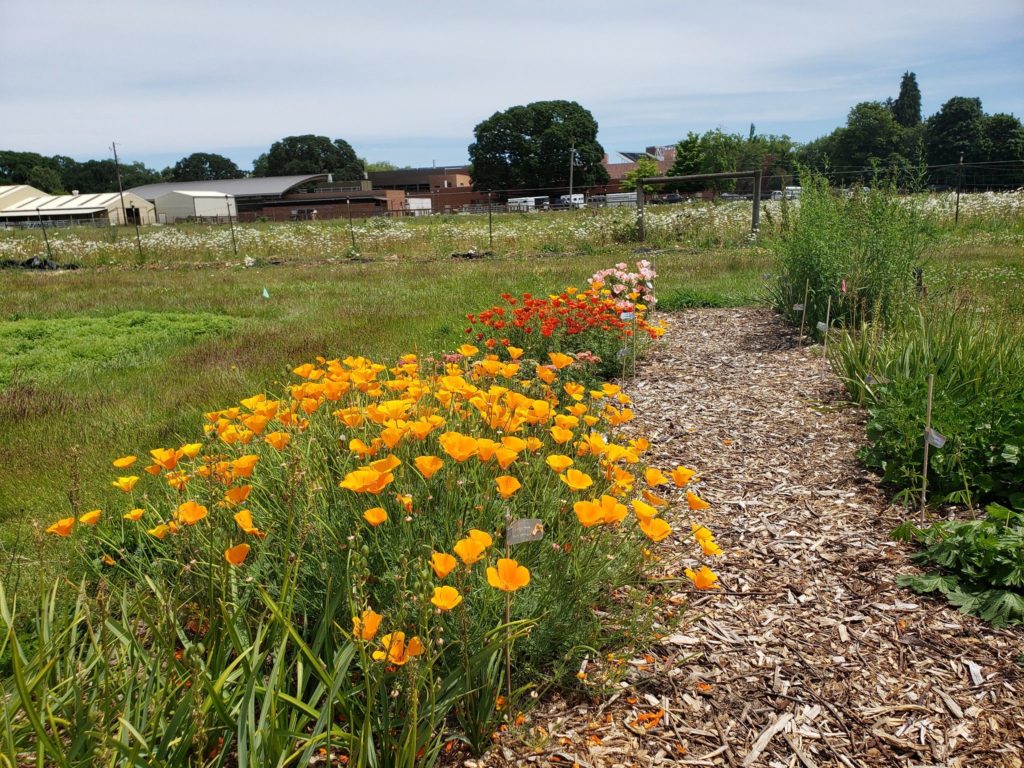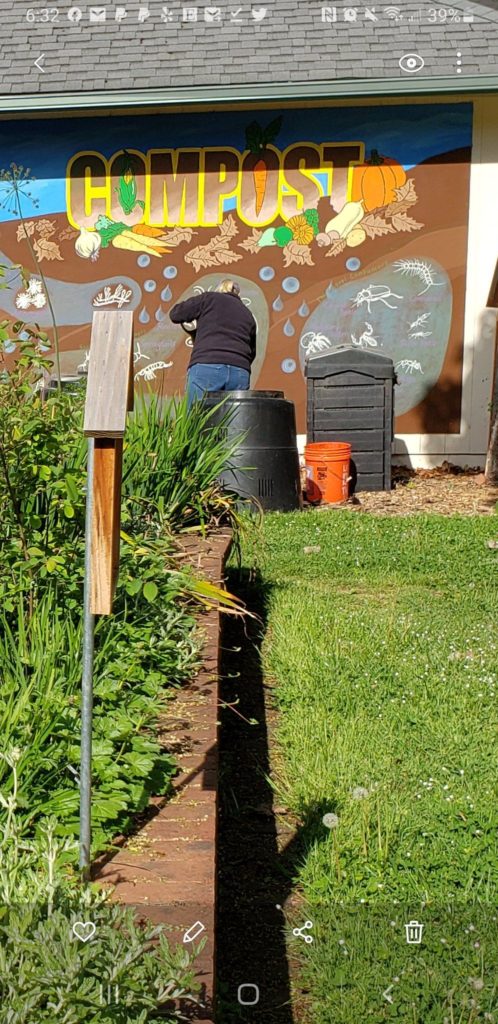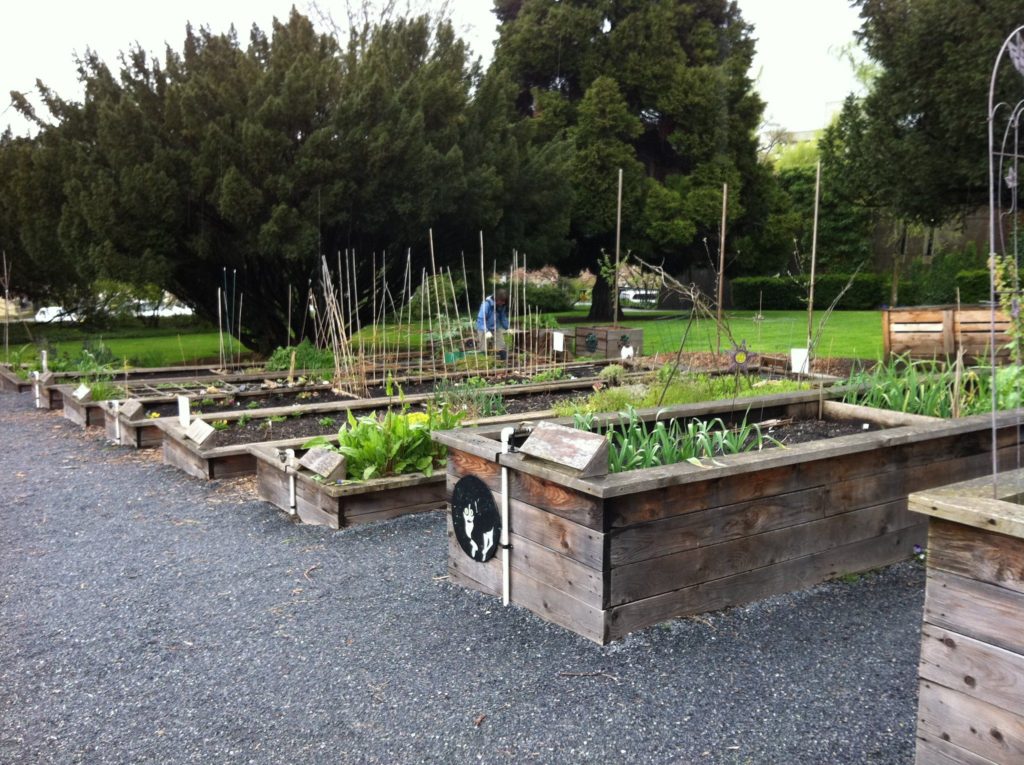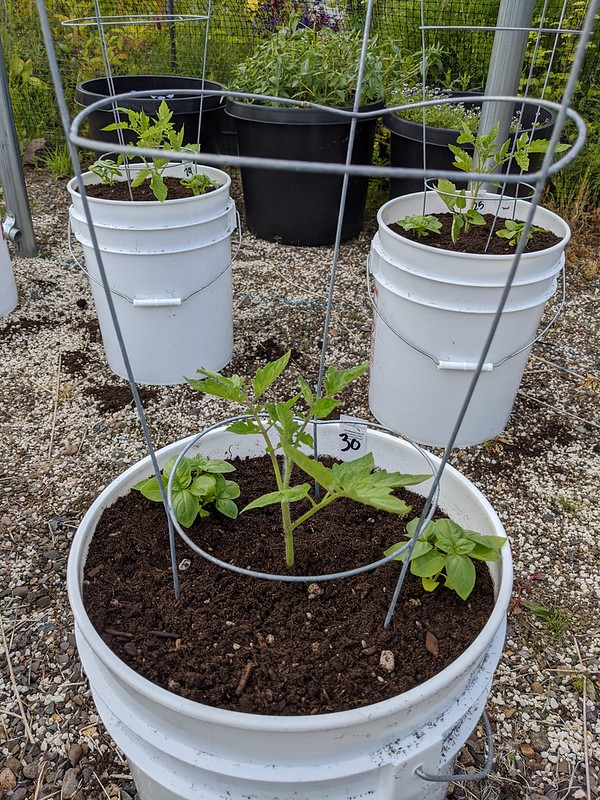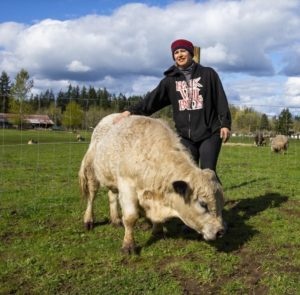
As part of Master Gardener Week at the end of October, I had the opportunity to view “Five Seasons: The Gardens of Piet Oudolf” and participate in a discussion afterwards. This recently-released film has brought renewed attention to the gardens and landscapes created by this internationally-renowned designer. His popular public garden designs, and several books, have had a profound impact on the design of public spaces, as well as private gardens.
Oudolf’s gardens have been described as spontaneous, immersive and naturalistic, and rely heavily on grasses and structural perennials to maintain visual interest well into the winter. They evoke flower-filled meadows and prairies, and seem at first glance like places that could, indeed, have occurred spontaneously. Oudolf himself acknowledges, though, that they require a certain amount of “interference”, and his design process is comprehensive and very specific. He has a palette of plants that he has tested over time for durability and effect.
During the bloom season, one imagines these gardens will be buzzing with pollinators, and be places of lively, hungry activity. When it comes to pollinators, it seems, almost any garden is better than no garden at all, and a garden doesn’t need to be designed especially for pollinators in order to offer benefits to them. As research in this lab has shown, though, a garden designed specifically to be pollinator friendly has an outsized impact.
So I wondered, how pollinator-friendly are Oudolf’s naturalistic gardens, really?
On the positive side:
• Lots of flowers. From early season to late, things are blooming. Plants are left standing well into winter, providing seed and shelter.
• Little or no use of pesticides.
• Native plants are often included, though there is no particular emphasis on them.
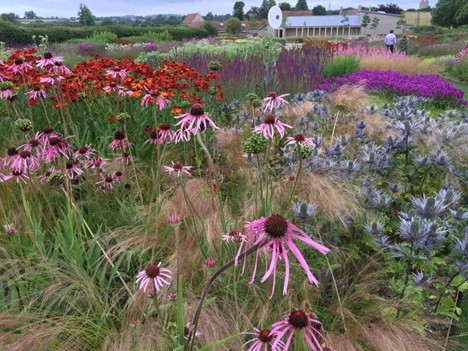
On the negative side:
• Maintenance involves cutting everything to the ground in late winter. This destroys the winter homes of cavity-nesting bees that use the stems. At the Lurie garden in Chicago, this problem was recognized and steps were taken to leave some stems standing.
• Lack of layering. The iconic Oudolf garden is composed almost entirely of herbaceous perennials, with trees and large shrubs lacking. This limits the provision of food and habitat for a variety of creatures.
I believe pollinators could be better supported by Oudolf-style gardens with three simple changes.
• Keep mowed areas to a minimum. Group plants with good winter nesting stems, and leave them standing until they are covered by new growth.
• Include and group small groups of larger plants such as suitable small trees and shrubs.
• Prioritize native plants where possible.

https://www.luriegarden.org/2019/03/15/cutting-back-on-the-cut-back/
If you would like to know more about Piet Oudolf’s gardens, plant choices, and design process, here are some reference materials. And if you get the chance, watch the film “Five Seasons: The Gardens of Piet Oudolf”.
Dream Plants for the Natural Garden by Henk Gerritsen and Piet Oudolf, Timber Press 2000
Essentially a catalog (although not all plants are pictured) of plants that Oudolf has culled to be “reliable plants that, over the years, can be maintained in an average garden without too much in the way of artificial props and bolstering”. Many of them “look good dead”, too. These are the plants he uses in his designs. They are divided into categories of Tough Perennials (the longest section by far), Playful Biennials and Annuals, Troublesome Invasive Plants, and Troublesome Capricious Plants – hardly the usual categories!
If you are an experienced gardener and want an invaluable reference for plants that will enhance your natural garden without requiring loads of work, this book is for you.
Planting Design: Gardens in Time and Space by Piet Oudolf and Noel Kingsbury, Timber Press 2005
On the other hand, if you are not an experienced gardener, this book might be a better place to start. It is a thrifty introduction to the concepts of how gardens fit into nature, and vice versa, and how plants can be used through space – and time! – to create the desired outcomes. There are many lists of plants for specific purposes, such as Small Trees to combine with perennials, and Biennials for self-sowing, and a short but useful section on how to prepare for, implement, and maintain a planting of this sort.
Planting: A New Perspective by Piet Oudolf and Noel Kingsbury, Timber Press 2013
This book builds on the previous two, offering a detailed look at the techniques and philosophy Oudolf uses to design his gardens, as well as specific ways in which he uses plants in them. A season-by-season guide dissects various effects and combinations, and a chart towards the end concisely organizes many of the plants used. One of the most interesting concepts is that of matrix planting.

For more detail on the creation of specific gardens by Piet Oudolf, there are also books on Hummelo, the High Line, and Durslade Farm.
The Self-Sustaining Garden by Peter Thompson, Timber Press 2007
In this book matrix planting is presented in great detail. This is an effective and efficient way of designing intermingled plantings without having to specify the location of each and every plant. The matrix (often grasses) may be made up of several plant species, and serves as a stage for other, showier compatible plants embedded in it.
Dramatic Effects with Architectural Plants by Noel Kingsbury, Overlook Press, 1997
Oudolf’s chief writing partner has produced many noteworthy books himself. As the title describes, this book focuses on plants with strong and dramatic architecture. Having some of these in the mix is a key technique that makes Oudolf’s designs work.
Naturalistic Planting Design by Nigel Dunnett, filbert press 2019
With a foreword by, who else, Piet Oudolf, this is one of the most recent entries in the category of books focusing on natural or naturalistic design. It’s a dense book with at least as much text as photography, covering garden lore from historic, through contemporary, and looking to the future. Basic design principles, as they pertain to a naturalistic design, are also presented, along with a series of case studies illustrated by seasonal photos.
Gardening with Native Plants of the Pacific Northwest by Arthur Kruckeberg and Linda Chalker-Scott, University of Washington Press, 2019.
And finally, if you want to use PNW native plants to achieve Oudolf-like effects in your garden, this recent book is an accessible, thorough, well-illustrated guide to those plants. You will find it easy to browse through for plants that have the look you want. Symbols by each photo give a hint as to each plant’s cultural requirements.
Other resources:
The blog Gardenista has several lovely entries on aspects of Oudolf’s designs. https://www.gardenista.com/posts/?t=oudolf#search
Piet talks about current projects in this recent interview: https://www.hauserwirth.com/ursula/29413-attached-world-piet-oudolf-garden-life
If you want LOTS of pictures to look at, try Piet Oudolf’s Flickr photostream, https://www.flickr.com/photos/10470961@N03/
Or his own website https://oudolf.com/





